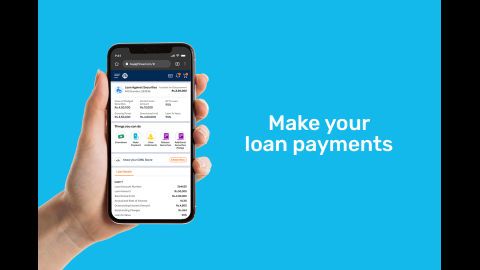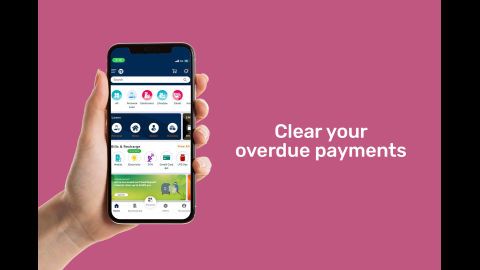What is bank account registration for EMI Network Card?
Bank account registration for the EMI Network Card is the process of linking your savings or current bank account to your EMI Network Card. This step is essential for enabling the automatic deduction of EMIs (Equated Monthly Instalments) towards the purchases you make using the card. It ensures timely repayments without the need for manual payments every month.
When you register your bank account, you authorise the card issuer—such as Bajaj Finserv—to directly debit your account on the due date. This is generally done through a mandate process, such as e-NACH (Electronic National Automated Clearing House), which allows for secure, recurring payments. You’ll be required to enter your bank details and complete an authentication process using your registered mobile number or debit card.
Registering your bank account brings several advantages. Firstly, it ensures that you never miss an EMI due date, helping you maintain a good repayment record and credit score. Secondly, it offers convenience by automating payments, saving you the effort of tracking and paying manually. Thirdly, it allows you to manage your EMI expenses smoothly without having to worry about late fees or service disruptions.
This process is usually carried out at the time of EMI Network Card activation or during the first transaction. However, you can also update or register a different bank account later through the card issuer’s customer portal or mobile app.
It’s important to make sure that the registered bank account has sufficient funds on the due date to avoid EMI bounce charges or negative credit impact. Keeping your account registered and active ensures uninterrupted access to EMI benefits, such as zero-cost EMIs, flexible tenure options, and instant credit at partner stores.
In summary, bank account registration is a critical step for seamless EMI management on your Bajaj Finserv EMI Network Card.
How does bank account registration work?
Bank account registration is the process of linking your active savings or current account to a financial service, such as an EMI Network Card or loan account, to facilitate automatic transactions. It enables institutions to debit or credit money directly from or into your bank account with your consent. This registration is essential for setting up auto-debit instructions, e-mandates, or recurring payments.
The process usually begins with the user providing their bank account details, including the account number, IFSC code, account type, and bank name. After submitting this information, the user must authenticate the request through one of several verification methods—such as OTP-based eMandate verification using their registered mobile number, net banking, or debit card authentication.
Once verified, the bank processes the eNACH (Electronic National Automated Clearing House) mandate, which allows for secure and authorised debits at regular intervals. This is a paperless and efficient method of registration that minimises manual intervention.
Financial institutions like Bajaj Finserv use this registration to ensure timely EMI payments for EMI Network Card users. When a mandate is active, the EMI amount is auto-debited from the registered account on the scheduled due date each month. If the registration fails, the user may need to retry using alternative authentication methods or check if the provided details are correct and active.
This entire setup brings convenience, security, and discipline to financial transactions. Users are assured of timely payments without having to remember due dates or make manual transfers. In case of a change in bank account or insufficient balance, users can update or re-register a new account via the customer portal or mobile app.
In short, bank account registration works by linking your account through an authorised, verified mandate process to ensure seamless and automated financial transactions.
Why registering your bank account is important for EMI cardholders?
Registering your bank account is a crucial step for EMI cardholders, as it enables seamless and timely repayment of EMIs. Without a registered bank account, you cannot activate auto-debit facilities, which are essential for ensuring monthly instalments are paid on time. This process creates a secure link between your account and the EMI Network Card, allowing financial institutions to debit your EMIs automatically.
One of the primary benefits of registering your bank account is the convenience it offers. With auto-debit in place, you don’t have to worry about remembering due dates or manually initiating payments every month. It reduces the risk of missed payments, which could otherwise result in penalty charges or affect your credit score. A registered bank account ensures consistent, hassle-free repayment, helping you maintain a strong credit history.
Additionally, a registered account is necessary for activating and using the EMI Network Card. In many cases, financial institutions do not allow card activation or transactions unless a valid bank mandate is in place. This step confirms your repayment capability and ensures you’re eligible for the credit facility extended via the EMI card.
Another important aspect is flexibility. You can register your preferred savings or current account and update the linked account if your banking preferences change. This keeps your repayment process smooth and uninterrupted.
From a security standpoint, the bank account registration process is encrypted and verified through methods like OTP authentication or debit card verification, ensuring your financial data is safe.
In summary, registering your bank account is not just a formality—it is a foundational requirement for EMI cardholders. It offers financial discipline, convenience, and security while enabling uninterrupted access to EMI facilities and benefits such as zero-cost EMI and flexible repayment tenures.
Bajaj Finserv EMI Network Card, also known as Insta EMI Card provides you with the required financing that helps you shop for your favourite products. With the help of this card, you can convert your shopping bills into easy EMIs.
EMI Network Card comes with an end-to-end online application process. You can easily complete your application within 10 minutes. However, one of the most critical steps after the application is to register the mandate so that you can start using your card.
Let’s understand the benefits of registering the mandate for your EMI Network Card.
After you have successfully completed the application, it’s important to register your mandate to activate your card. Until you register the mandate, your card remains inactive. Once the mandate registration is completed, your card is active and ready for use.
Once your card is activated, you can shop across a range of products such as electronics, home appliances, groceries and more. You can convert your bills and repay them in easy EMIs spread over a tenure of up to 60 months. You can use your EMI Network Card at 1.5 lakh partner stores or on leading e-commerce websites.
Now that you know the benefits of registering the mandate, you can use online Bajaj Finserv services and complete your mandate registration. You can use our service portal on the web or use our app and register your mandate with ease.
Follow these simple steps to register your mandate using our service portal.
- Click on the ‘Register Now’ button on this page to go to our service portal
- Enter your registered mobile number and the OTP to sign-in
- Complete the verification by entering your date of birth and proceed
- Select your card from the ‘Relations’ section
- Click on ‘Register Now’ and proceed to register your mandate
In case you are using our app, you can register your mandate on the go by following these easy steps.
- Click on the ‘Register Now’ button on this page
- Select your card from the ‘Relations’ section of the app
- Click on the ‘Register Now’ option and proceed to register your mandate
What are the documents required for mandate registration?
Mandate registration is an essential step for enabling auto-debit facilities linked to financial services like an EMI Network Card. It allows institutions to deduct EMIs directly from your bank account on the due date. To complete this process, you need to submit a few basic yet important documents that verify your identity, banking details, and authorisation.
The primary document required is a cancelled cheque from the bank account you wish to register. This helps verify your account number, IFSC code, and bank branch details. It must be clearly legible, with your name printed on it for confirmation.
You may also need to provide a copy of your bank passbook’s first page if the cancelled cheque does not carry your name. This acts as supporting proof of account ownership.
In most digital mandate registrations (e-mandate or eNACH), no physical documents are needed, but you must authenticate the registration using your debit card or net banking credentials, or an OTP sent to your registered mobile number.
Along with banking proof, identity verification may be required using your PAN card and Aadhaar card or any other valid government-issued ID, particularly when mandates are registered offline.
In cases where the mandate registration is part of a loan or EMI card application, these documents are usually collected during the onboarding process.
In conclusion, the documents required for mandate registration are minimal, aiming to ensure the secure and verified linking of your bank account for seamless EMI payments.
Once your mandate is registered, your EMI Network Card gets activated and you can use it to convert your shopping bills into easy EMIs.




